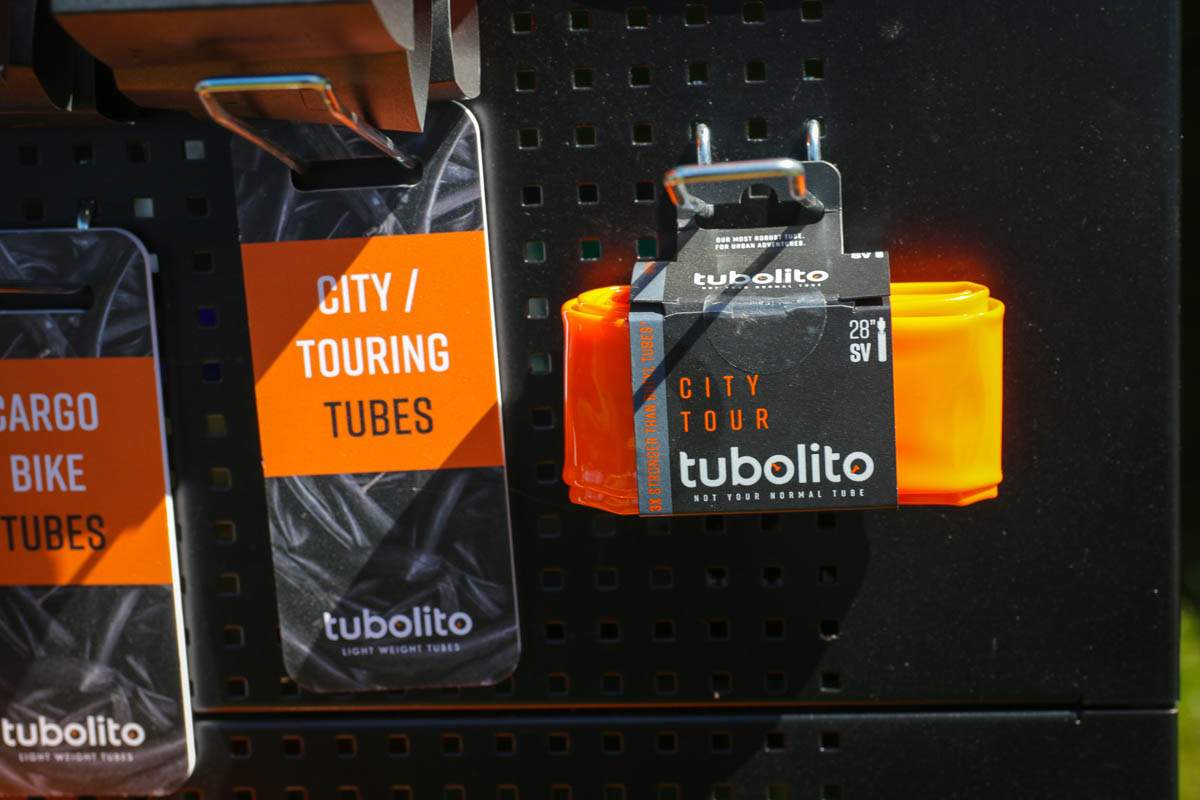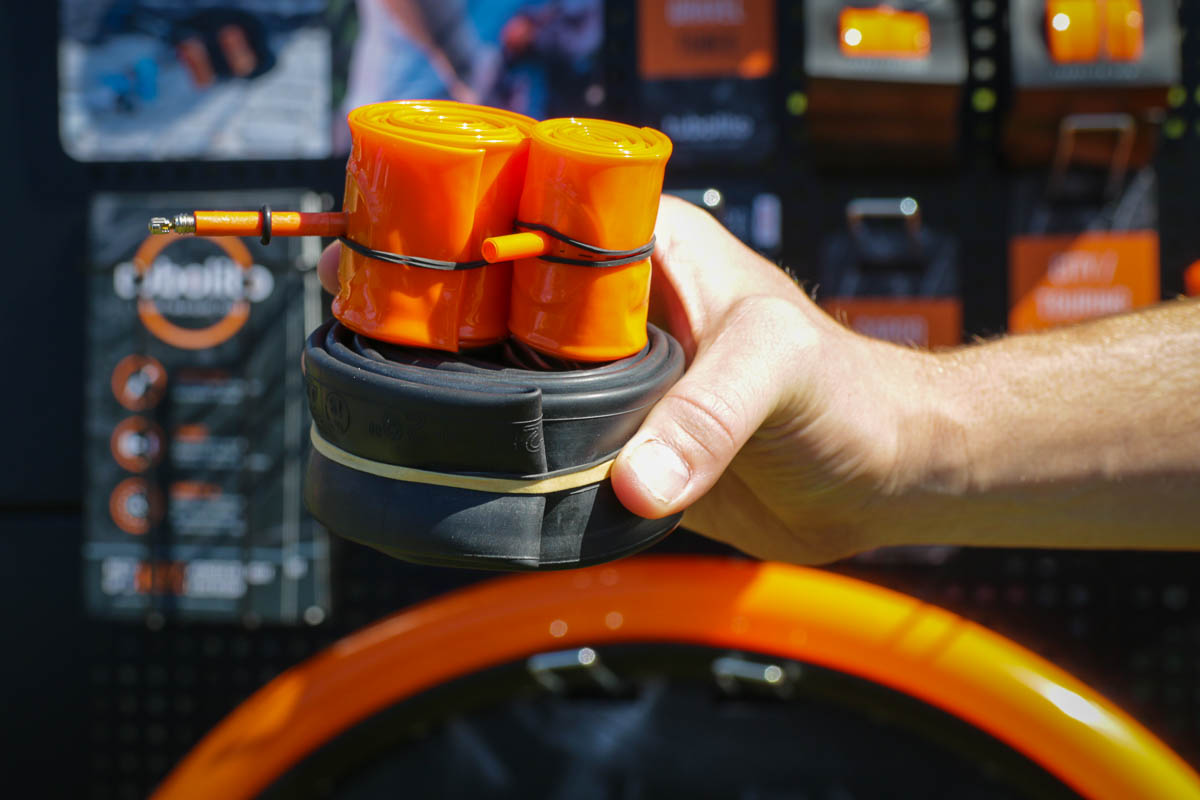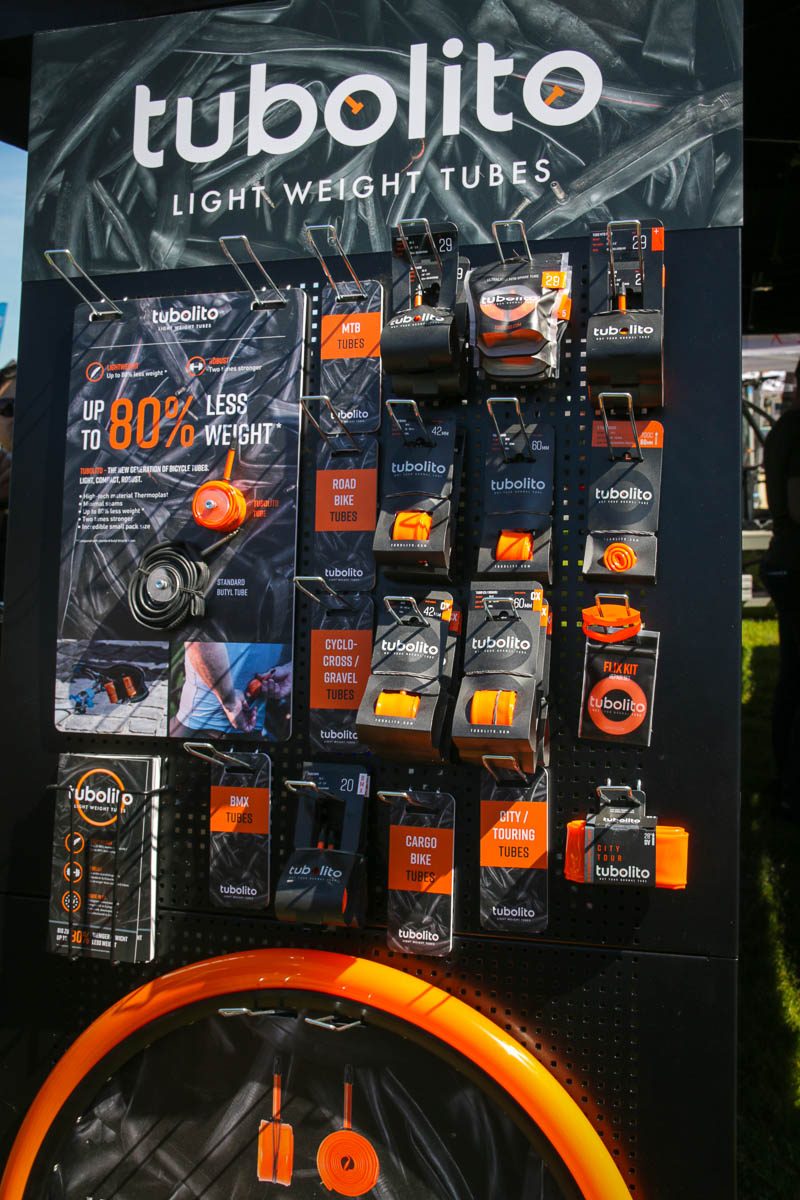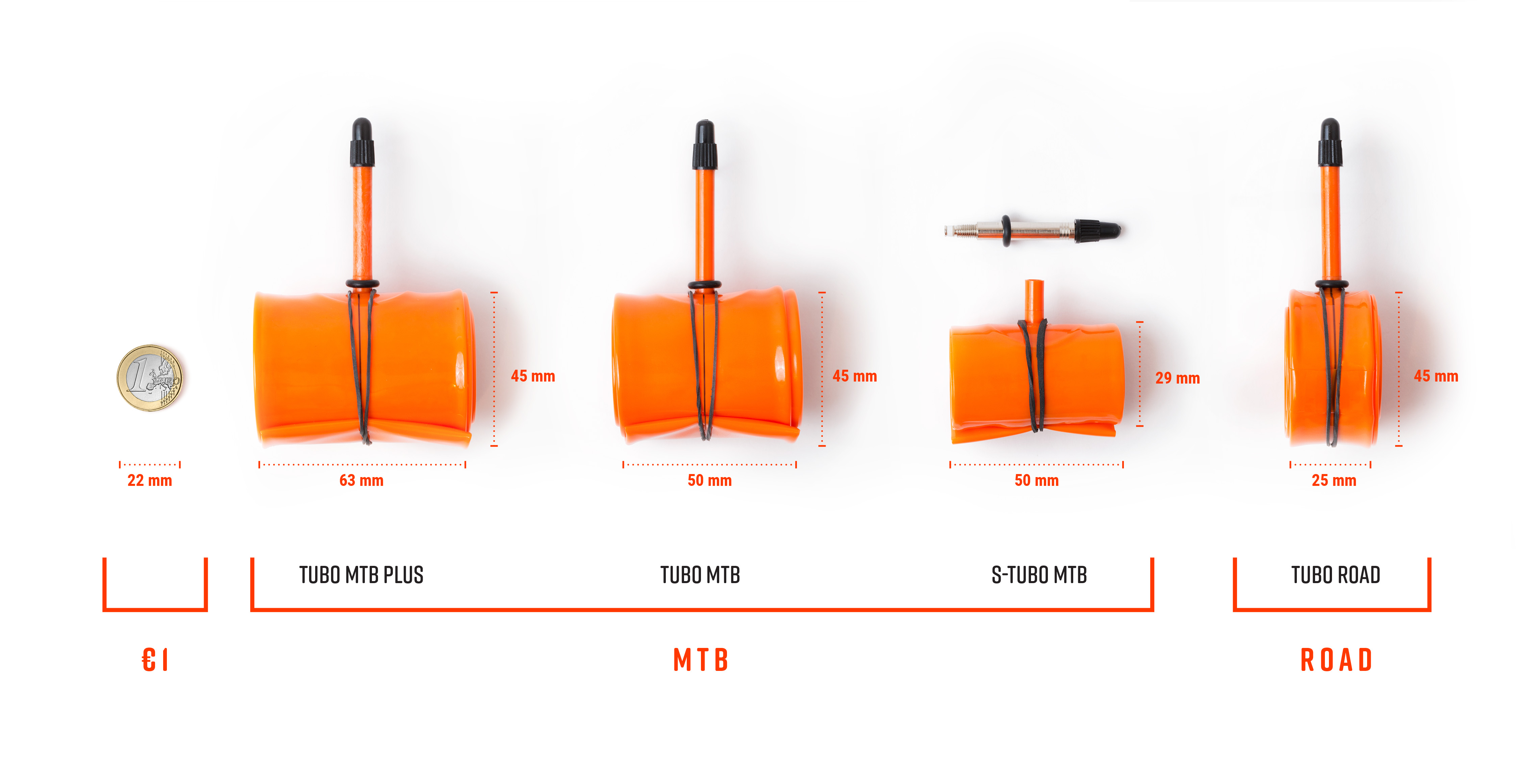Of all the areas to upgrade your bike, your inner tubes are probably one of the last places you’d look. What’s that? You haven’t run an inner tube since the year 2000? That’s actually one of the reasons Tubolito (and S Tubo) makes sense.
Above are three different inner tubes – but all for the same size tire (29″ x 1.8-2.4″). The standard butyl inner tube is massive compared to the Tubo MTB, and positively dwarfs the S-Tubo MTB next to it. If you have to carry a spare tube that you’re rarely going to use, that S-Tubo MTB will take up a lot less room in your pack, and add less weight at just 45g. Even the Tubo MTB is still super light at 85g for the same size. Because of this, the price tag of $35 or $38 per tube is a little easier to swallow given that it’s your get out of (flat) jail free card, and if cargo space is at a premium.
But running them as every day inner tubes? Especially for the likes of BMX and City/Touring riding? That’s more of a stretch, but Tubolito has changed things up a bit for these applications.
On the Tubo-City/touring side, the thermoplastic elastomer wall thickness has been increased to provide 3x the puncture resistance compared to a standard tube (the other Tubolito tubes offer 2x the puncture resistance of butyl). Even so, the tubes are still impressively light with a 700c x 30-47mm schrader tube checking in at 100g, and the presta version at 92g. The price is also lower at just $25 per tube. I suppose if you are running super burly tires to prevent flats, adding a pair of these might be a way to get some of those grams back.
The Tubo-BMX tube uses the standard thermoplastic construction that’s 2x tougher than a standard tube with super low weights of 58g for a 20 x 1.8-2.4″ schrader valve or 39g for a 20 x 1 1/8-1 3/8″ schrader valve tube. These probably aren’t the best idea for street or park riding where pinch flatting is a common occurrence, but I could see many BMX parents shelling out $35 a tube to give their child every competitive edge on the track.
With the addition of the City/Tour and BMX inner tubes, Tubolito has almost a full range of sizes to fit most bikes (even plus bikes, but no fat bikes – yet). And what about flats? Even with 2-3x the puncture resistance, flats can still happen. To fix your $35 inner tube, Tubolito sells a $5 patch kit that includes 5 patches that are little more than self adhesive stickers. Just clean the spot with an included alcohol swab, slap on the Flix, and you’re on your way.




